Russia’s ambassador to Sweden has been summoned to the Ministry of Foreign Affairs to explain why a Russian Navy Su-27 came within 20 metres of a Swedish military aircraft on February the 19th.
The incident occurred last Tuesday when a Swedish surveillance plane was on a routine mission over the Baltic Sea.
The Swedish aircraft is likely a Gulfstream IV that is modified with Signals intelligence (SIGINT) payloads.
According to Colonel Anders Persson in a local media report, the Russian fighter jet pilot behaved aggressively.
“First they passed from the front and they came back and positioned themselves very, very close – closer than usual.”
Persson said that the Russian SU-27 was at one point within 20 metres of his plane. He said the “offensive behaviour” was likely a signal from Russia that it did not believe the Swedish plane “should be where we were”.
The Swedish Armed Forces (Försvarsmakten) reported the incident to the government, and now the Foreign Ministry sas it wants answers.
“The Foreign Ministry views this incident as serious. The Russian plane acted in an improper and unprofessional manner in a way that jeopardized flight safety.”



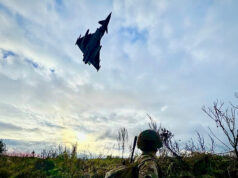
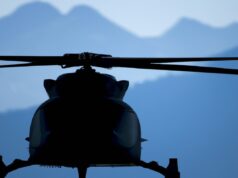
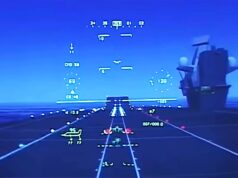
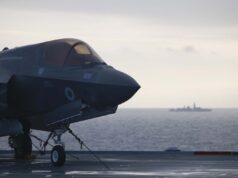

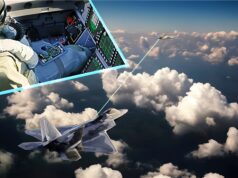
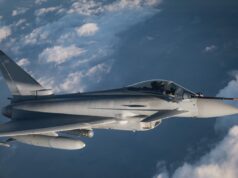
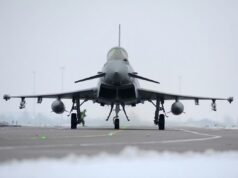
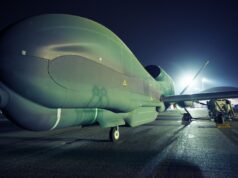


Pure provocation……..why?
The usual reasons. Sweden was very close to NATO during the cold war – remember the sub hunts off their coast in 1981 ?
Whisky on the rocks!
Ta Da ! 🙂
Classic headline to be fair. I can still see it now.
Naughty Russians were using seabed ops craft but were never caught. Saw their tracks.
In breach of aviation regulations for a start, to do that is clearly an aggressive act and thus a deliberate act of provocation in international Airspace. If they are trying to claim that airspace that of course would be a further provocation. Imagine what the Russian reaction would have been had any foreign aircraft come within 20 metres of one of their military aircraft. You can bet they would have seen it as provocation in the extreme. I guess we can play at semantics as to what the term ‘provocation’ covers I guess one’s political/cultural or other leanings would determine that but that would put the word’s importance before the actual physical act which would be concerning.
Because
They are fucked ruSSian bastards, that have to be vanished from Earth
It certainly how’s a worrying lack of professionalism,
20 mts is an eye blink away from disaster, all it takes is to hit a small patch of wake turbulence and both aircraft would be sat on the sea bed.
I bet the Swedish are furious and rightly so.
Where about’s was the Swedish plane I wonder?
And what is classed as international airspace? Is that 12 miles off land?
Hi Daniele, the quick answer is yes, international air space generally begins 12 nautical miles from the coast of a State. The slightly longer and better answer is that UNCLOS Article 3 provides that ‘Every State has the right to establish the breadth of its territorial sea up to a limit not exceeding 12 nautical miles, measured from the baselines determined in accordance with this this Convention.’ The link between the territoriality of the sea space and the air space is provided for by Article 2(2), which holds that ‘sovereignty extends to air space over the territorial sea as well as to its bed and subsoil.’ According to Article 5, a normal baseline is drawn along ‘the low-water line along the coast as marked on large-scale charts officially recognised by the coastal State.’
There are however several exceptions with special rules for the drawing of baselines which mean simply navigating a military aircraft more than 12 nautical miles from the land area of a State might not be enough to ensure it is navigating inside international air space. In the case of a land area fringed by a reef for example, Article 6 holds that the baseline can be drawn from the ‘seaward low-water line of the reef’. A more common special rule is that straight baselines may me drawn under certain circumstances. This is provided for by Article 7 in cases where, for example, ‘the coastline is deeply indented and cut into, or if there is a fringe of islands along the coast in its immediate vicinity’. The UK draws such baselines between the outer islands of the Western Isles.
While this might complicate compliant navigation it is important to note that the right to self-defence is not necessarily engaged by the unlawful use of force which results from the violation of sovereign air space by a foreign military aircraft. The International Court of Justice in the Case Concerning Military and Paramilitary Activities in and Against Nicaragua (Nicaragua v. United States) Merits, Judgment, ICJ Reports 1986, differentiated at para 249 between a mere use of force and an armed attack. The Court held that only the latter gives raise to the right of armed self-defence and they are differentiated by a test of ‘scale and effects’ at para 195. The upshot is that a foreign military aircraft is not liable to be attacked simply because it has violated sovereign air space.
I hope that is of some interest.
– Alex
Alex
Only just found your answer.
Thank you.
Hi Daniele,
The quick answer is yes, international air space generally begins 12 nautical miles from land. The slightly longer answer is that UNCLOS Article 3 provides that ‘Every State has the right to establish the breadth of its territorial sea up to a limit not exceeding 12 nautical miles, measured from the baselines determined in accordance with this this Convention.’ The link between the territoriality of the sea space and the air space is provided for by Article 2(2), which holds that ‘sovereignty extends to air space over the territorial sea as well as to its bed and subsoil.’ According to Article 5, a normal baseline is drawn along ‘the low-water line along the coast as marked on large-scale charts officially recognised by the coastal State.’
There are however several exceptions with special rules for the drawing of baselines which mean simply navigating a military aircraft more than 12 nautical miles from the land area of a State might not be enough to avoid straying outside of international air space. In the case of a land area fringed by a reef for example, Article 6 holds that the baseline can be drawn from the ‘seaward low-water line of the reef’. A more common special rule is that straight baselines may me drawn under certain circumstances. This is provided for by Article 7 in cases where, for example, ‘the coastline is deeply indented and cut into, or if there is a fringe of islands along the coast in its immediate vicinity’. For example, the UK draws such baselines between the outermost islands of the Western Isles.
While this might complicate compliant navigation it is important to note that the right to self-defence is not necessarily engaged by the unlawful use of force which results from the violation of sovereign air space by a foreign military aircraft. The International Court of Justice in the Case Concerning Military and Paramilitary Activities in and Against Nicaragua (Nicaragua v. United States) Merits, Judgment, ICJ Reports 1986, differentiated at para 249 between a mere use of force and an armed attack. The Court held that the latter gives raise to the right of armed self-defence and they are differentiated by a test of ‘scale and effects’ at para 195. The upshot is that a foreign military aircraft is not liable to be attacked simply because it has violated sovereign air space.
I hope that is of some interest.
Alex
Seen above Alex!
LOL.
I was guessing if the Swedes have a spy plane off Kalingrad or Krondstadt no wonder the Su27’s are up.
No need for the hostile flying mind.
It’s common knowledge that Russia can do what they want, we know they will and they know they will. Sadly and boldly from our side we will have to at one stage take porportionate military action that we hope logically will make Russia back off a little and see sense, likelyhood of this ever happening is “No chance”
More likely an accident will happen ,remember the American intelligence plane that collided with a Chinese fighter and had to land in China.
As Turkey did ?
Russians are notoriously bad drivers. The death rate on Russian roads is sky high.
Talking about Russians, and largely off topic, I would what will happen when Little Vlad cops it? Say he copped it tomorrow.
I have my own theories on this, but i’m interested in what others think.
I would hope the Russians would turn things about and come in from the cold ….
Depressingly though, I think another bad temperd bloke with a taste for the personality cult will take over and carry on driving Russia into the cold isolated wilderness.
It’s really sad, but the poor long suffering Russian people seem destined to suffer under the jackboot forever…
John, Medvedev would assume leadership to begin with until elections. You have a very typical English view of Russia
John is right. I live in Russia, it’s jackboots all the way.
It’s a police state through and through. Enough people fall for the personality cult every time, and it’s enough to keep pooty in power.
Russians don’t know how to free themselves as they have never been free to start with. It’s just another day to them. Some 70% of the country’s wealth is in the hands of 1%. What the hell!!
As for Medvedev, he probably will take over, that is if there isn’t a internal struggle between the intelligence agencies and milita, ie between the FSB and Rossgvardia, the SRU and GRU and so on. And, who knows, there may be an uprising by the people.
Just to give you an example, the Rossgvardia numbers 340,000. This is the internal military that some call Putin’s personal army. Think about that for a second.. our full time military numbers less than 140,000 at the moment, whereas their milita alone numbers 2 and half times that.
If we count up the milita and security services (not including the GRU which is part of the military proper) we come to the following:
Rossgvarida (Internal military) = 340,000
FSB (MI5 equivalent) = 66,200 uniformed staff and 160-200,000 border guards = upto 266,200 altogether
SVR (M16 equivalent) = Unknown. There were said to be 13,000 back in 2008. My guess is that there will be many more than that, but I don’t know the figure
FSO (Federal Protective Service) = 50,000+ (includes the Kremlin Regiment and those securing the Cheget)
MVD (Ministry of Internal Affairs) = 907,630 (they control the police, migration affairs and drugs). Lots will be deckbound people.
Without the MVD that comes to around 669,200. With the MVD and normal police service, which number 904,871 employees, there is around a wopping 2.5 million people involved in controlling policing, security etc. And i’m sure i’ve missed some agencies.
Then there is the actual what we would call the military. I say that because in Russia the FSB and some others are miitary but not under the control of the Russian Defensive Ministry.
Police state anyone?
I should note, having said all the above, that most Russians are just normal people going about their daily business and most are friendly. Russia is still their country, and they want to be proud of it. I tend to separate the state from the people where possible.
Bravo. I have a lot of time for the Russian people myself.
Quite fascinating post above antidote.
I keep getting my FSB’s and SVR’s mixed up.
I thought is meant 20 miles! Jesus 20 meters is fine.
Its amazing just how crappy Russian aircraft look now compared to western counter parts. The SU27 was ahead of it’s time in the 80’s but it looks increasingly dated like everything else Russia can put in the field.
With the near cancellation of Su57 they will still be flying the same crap in 20 years.
The SU27 series upto the SU 32-35 are utterly useless and a modern Grippen (let alone Typhoon or Rafale) would make mincemeat of them in a fight. Sweden is quite rightly pressing ahead with its EASR equipped radar Grippen which once matched to meteor will make the Grippen Europe’s 2nd best air to air fighter (after Eurofighter typhoon) and better than current Rafale.
HMG need to get onto the ESAR radar game and order all Eurofighters to be retrofitted and a new multirole batch of 36 ordered to keep frontline RAF fighter numbers up.
With UK leaving the EU it is time we reinvested in defence.
I agree with the comments though this Russian pilot was seconds away from causing a military embarrassment and a very difficult situation for the Russians to have to explain.
Like the spies caught in the Hague trying to hack the chemical weapons research and prohibition institute and the Novichok attack in Salisbury. HMG should issue Russia with a bill for cleaning up that incident £15 million reported in the news this morning.
Mr Bell – the RAF have trained with the Indian Air Force ( Typhoon vs SU27 ) I don’t think the conclusion they drew was that the SU27 was useless,quite the opposite in fact.
It’s amazing every time the Indian air force trains with a foreign power they make great claims about how successful they were despite their vintage aircraft and yet somehow they can’t even hit a terrorist base in the face of a couple of old Pakistan F16’s.
The RAF and indeed the other arms of our military (rightly) play a staright bat over questions of who ‘won’ on these joint exercises, mostly because they consist of various scenarios, quite often tilted towards one pf the participcants favour, limiting the scope of ops and introducing unlikely ‘what if’ worst case scenarios. They are also of course. primarily about learning.
Hi Paul
Yes I read the reports on the RAF exercise Vs IAF SU 27. I think however there were restrictions on the flight envelopes, angle of attack and speed placed on the Eurofighter. Also the exercise was conducted at close range eggs air to air combat less than 5 mile range. The IAF did this to limit the Eurofighter dominance and to prevent the report being the RAF blew us out of the sky using AMRAAM at 20+ miles range.
The RAF agreed to the limitations as they wanted a realistic test of typhoons Vs su27 at close range. Not sure with meteor coming into service how the SU27 would fair at the intended medium to long range engagements Vs an intercepting typhoon.
Happy to debate, but talking to some extent colleagues in the RAF they all think SU27 would not survive to close range dogfight combat.
Cheers
I would agree, depending on what the Su27/35 is armed with, let’s say the latest offerings from Russia; the Typhoon armed with Meteor and ASRAAM will have a significant range advantage. The ASRAAM is designed to engage a target beyond the target’s own IR missile range such as the Vympel R-73. This allows the Typhoon to fire and turn away whilst remaining outside the target missile’s envelope. This is doubly true for Meteor. The Su27/35 has a high radar cross section due to the number of corner reflectors a large panel gaps causing cavity resonance. Therefore it will be detected at a range a lot further away than the Typhoon. The Su27/35 may be lucky enough to detect the Typhoon’s Captor radar for a couple of sweeps, but that is all it needs to send the Meteor. The speed of the Meteor should allow the Typhoon to be well outside the engagement envelope of the standard R-77 (AA12 Adder) i.e endex.
Yet another Russian pilot with no professionalism. Guys like this are usually the first ones to get shot down when the missiles start flying.